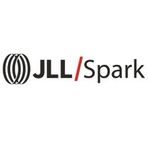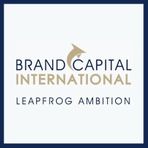
Corporate Venture Capital vs Traditional VCs: Key Differences and Benefits

Corporate Venture Capital (CVC) is a form of venture capital where a large corporation invests in early-stage or start-up companies aligned with their strategic interests. In this form of investment, the corporation provides funding and strategic and operational support to the start-up in exchange for equity or ownership in the company.
What is Corporate Venture Capital?
CVC differs from traditional venture capital in that the corporate investor is not only interested in financial returns but also seeks to protect its corporate strategy and gain a competitive advantage through the investment. By investing in startups, corporations hope to access innovative technologies, products, or services that can enhance their operations or offer new growth opportunities. CVCs are commonly found in industries such as technology, healthcare, and energy, where innovation plays a critical role.

Related resource: Understanding Contributed Equity: A Key to Startup Financing
Key Differences Between CVC and Traditional VCs
CVCs typically have a single firm as their limited partner, resulting in a highly concentrated capital source. The parent corporation plays a significant role in the daily operations of the corporate venture. CVC teams are expected to closely monitor their portfolio companies and regularly share insights and reports with their corporate partner.
Benefits of Partnering with a Corporate Venture Capital Firm
Partnering with Corporate Venture Capital can offer significant benefits beyond just funding. By providing access to resources, expertise, partnership opportunities, flexibility in investment terms, and long-term support, CVCs can help startups accelerate their growth.
Access to Resources and Expertise
- Since CVCs are backed by large, established corporations they have significant resources, such as research facilities, new technologies, specialized expertise, and established networks that can be leveraged by their CVC arms to support their portfolio companies.
- They also have a more extensive network of contacts in their industry than traditional VCs because the parent company of the CVC likely has established partnerships, customers, and suppliers that they can leverage to provide strategic support to their portfolio companies.
- CVCs may also provide startups with mentoring, coaching, and strategic guidance from experts related to them.
More Skin in the Game and Long-term Support
- CVCs have a vested interest in the success of their portfolio companies because they are seeking strategic value in addition to financial returns. This means that they are motivated to provide ongoing support, guidance, and resources to help their portfolio companies achieve their goals.
Partnership Opportunities
- These partnerships can provide startups with access to new markets, distribution channels, and customer bases. Partnering with a CVC can also help startups to gain credibility and visibility in their industry, which can be particularly valuable for early-stage startups.

Successful CVC and Startup Partnerships
- Intel Capital and DocuSign
- Intel Capital, the corporate venture capital arm of Intel, invested in DocuSign, an electronic signature technology company. Intel Capital’s investment provided DocuSign with access to Intel’s expertise in hardware and software technologies, as well as its global network of customers and partners. This partnership helped DocuSign expand its market reach and enhance its product offerings, while Intel Capital gained strategic insights into the digital transformation space.
- Google Ventures (GV) and Uber
- GV, the venture capital arm of Alphabet Inc. (Google‘s parent company), made an early investment in Uber. GV provided Uber with not only financial backing but also access to Google’s mapping and technology resources, which significantly contributed to Uber’s growth and expansion. This partnership allowed Uber to leverage Google’s expertise in mapping and navigation services, enhancing the overall user experience of the Uber app.
- Qualcomm Ventures and Fitbit
- Qualcomm Ventures, the investment arm of Qualcomm, invested in Fitbit, a leading wearable technology company. Through this partnership, Fitbit gained access to Qualcomm’s advanced semiconductor technology and wireless connectivity expertise. Qualcomm Ventures supported Fitbit in developing innovative wearable devices with improved performance and connectivity, helping Fitbit strengthen its market position and technological capabilities.
How to Align with a Corporate Venture Capital Firm
Corporate Venture Capital typically invests in companies that align with their strategic interests. Founders should identify CVCs that are a good fit for their business by researching their areas of expertise, target industries, and investment focus.
Evaluate Expertise and Investment Focus
By focusing on CVCs that have expertise in the company's industry or sector, founders can ensure that as a partner, they can offer valuable insights, resources, and connections and have a deep understanding of the founder's business. This provides startups with strategic value beyond just financial support.
CVCs often have a specific investment focus, such as early-stage startups or companies developing new technologies. By understanding the CVC's investment focus, founders can determine if they fit the CVC's investment criteria. This can help ensure that the CVC is interested in investing in their business and that there is a mutual fit between the founder's business and the CVC's investment strategy.
Assess Track Record
Founders should evaluate the CVC's track record to determine if they are a good fit for their business. This involves researching the CVC's past investments, looking at the success rates of those investments, and speaking with other founders who have partnered with the CVC. By evaluating their track record, founders can determine if the CVC has a history of success in their industry or sector and if they are a good fit for their business.

Comparing the Investment Processes of CVCs and Traditional VCs
The investment process with a Corporate Venture Capital (CVC) firm can differ from that of a traditional VC in several ways. Here are some key differences:
Strategic Fit Assessment
Unlike traditional VCs, CVCs usually invest in startups that align with their parent company's strategic interests. This means that before investing in a startup, a CVC will first assess whether the startup aligns with its parent company's strategic priorities. This strategic fit assessment can involve evaluating how the startup's product or service fits into the parent company's product roadmap, assessing whether the startup's technology can be integrated with the parent company's existing technology, and determining if the startup's target market aligns with the parent company's customer base.
Long-Term Perspective
CVCs typically have a longer investment horizon than traditional VCs. While traditional VCs typically look to exit their investments in 5-7 years, CVCs may have a longer-term view and are often interested in building strategic partnerships with their portfolio companies that can last for many years. This longer-term perspective can impact the investment process, as CVCs may be more interested in investing in startups that have the potential to grow into long-term partners rather than those that can provide a quick return on investment.
Resource and Expertise Sharing
CVCs often have access to extensive resources and expertise from their parent companies, which they can share with their portfolio companies. This means that the investment process may involve evaluating whether a startup can benefit from the parent company's resources and expertise and how that support can be provided. For example, a CVC may look for startups that can benefit from access to the parent company's distribution network, research facilities, or specialized expertise.
Governance Structure
Since the parent company of the CVC is heavily invested in the success of the portfolio companies, the CVC may have more involvement in the day-to-day operations of the startup than a traditional VC. This can impact the investment process, as the CVC may be more interested in having a board seat or other forms of governance control to ensure that the startup aligns with the parent company's strategic goals.
Resources
- Portfolio Monitoring for Corporate Venture Capital Investors
- The Counter Club by Counterpart Ventures
- Startup incubators or accelerators that have partnerships or connections with CVC firms:

Corporate Venture Capital Investors
1. JLL Spark

2. Pruven
3. Wayra
4. Brand Capital

5. Coinbase Ventures
6. SR One
7. Chiratae Ventures
8. BDMI
9. NTT DOCOMO Ventures
Start Your Next Round with Visible
We believe great outcomes happen when founders forge relationships with investors and potential investors. We created our Connect Investor Database to help you in the first step of this journey.
Instead of wasting time trying to figure out investor fit and profile for their given stage and industry, we created filters allowing you to find VCs and accelerators who are looking to invest in companies like you. Check out all our investors here and filter as needed.
After learning more about them with the profile information and resources given you can reach out to them with a tailored email. To help craft that first email check out 5 Strategies for Cold Emailing Potential Investors.
After finding the right Investor you can create a personalized investor database with Visible. Combine qualified investors from Visible Connect with your own investor lists to share targeted Updates, decks, and dashboards. Start your free trial here.





